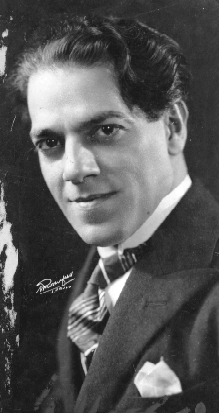Symphony No. 7, Odisséia da paz (Odyssey of the Peace) is a composition by the Brazilian composer Heitor Villa-Lobos, written in 1945. A performance lasts about 30 minutes.
| Symphony No. 7 | |
|---|---|
| Odisséia da paz | |
| by Heitor Villa-Lobos | |
 Heitor Villa-Lobos | |
| English | Odyssey of the Peace |
| Catalogue | W458 |
| Composed | 1945: Rio de Janeiro |
| Published | 1978: Rio de Janeiro |
| Publisher | Ricordi / Belwin Mills[citation needed] |
| Recorded | January 1954 |
| Duration | 30 min. |
| Movements | 4 |
| Premiere | |
| Date | 27 March 1949: |
| Location | London |
| Conductor | Heitor Villa-Lobos |
| Performers | London Symphony Orchestra |
History
editVilla-Lobos composed his Seventh Symphony in Rio de Janeiro in 1945 for a competition in Detroit. As required by the rules of the competition, it was submitted anonymously, using the pseudonym A. Caramurú. It was not awarded a prize in the competition. It was first performed in London on 27 March 1949 by the London Symphony Orchestra, conducted by the composer.[1]
The symphony, written shortly after the surrender of Germany on 7 May 1945, is subtitled "Odisséia da paz" (Odyssey of the Peace).[2] The second edition of the official Villa-Lobos catalogue, however, at one place gives "Odisséia de uma raça" (the title of an unrelated symphonic poem from 1953), together with a short programmatic description:[3]
A tidal wave splits up part of the Earth. Hills and mountains appeared, uncovering to human eyes a tortuous and irregular perspective, similar to the path of life across the centuries. As long as there are hills and mountains on earth, people will seek peace. The hills and mountains, firm and solid, planted on earth, defend mankind from whomever wishes, in vain, to destroy them and mimic them.
Instrumentation
editThe symphony is written for an orchestra consisting of 2 piccolos, 3 flutes, 3 oboes, cor anglais, 3 clarinets, 2 bass clarinets, 3 bassoons, 2 contrabassoons, 6 horns, 4 trumpets, 4 trombones, tuba, timpani, tam-tam, cymbals, triangle, pandeira, chocalho, glockenspiel, reco reco, side drum, large snare drum, bass drum, Novachord, xylophone, vibraphone, celesta, 2 harps, piano, and strings.
Analysis
editThe symphony has four movements:
- Allegro vivace
- Lento
- Sčerzo (Allegro non troppo)
- Allegro presiso
References
edit- ^ Villa-Lobos, sua obra 2009, p. 45.
- ^ Appleby 2002, p. 149.
- ^ Villa-Lobos, sua obra 1972, p. 243.
Cited sources
edit- Appleby, David. 2002. Heitor Villa-Lobos: A Life (1887–1959). Lanham, MD: Scarecrow Press. ISBN 978-0-8108-4149-9.
- Villa-Lobos, sua obra: Programa de Ação Cultural. 1972. Second edition. Rio de Janeiro: MEC, DAC, Museu Villa-Lobos.
- Villa-Lobos, sua obra. 2009. Version 1.0. MinC / IBRAM, and the Museu Villa-Lobos. Based on the third edition, 1989.
Further reading
edit- Béhague, Gerard. 1994. Villa-Lobos: The Search for Brazil's Musical Soul. Austin: Institute of Latin American Studies, University of Texas at Austin, 1994. ISBN 0-292-70823-8.
- Enyart, John William. 1984. "The Symphonies of Heitor Villa-Lobos". PhD diss. Cincinnati: University of Cincinnati.
- Peppercorn, Lisa M. 1991. Villa-Lobos: The Music: An Analysis of His Style, translated by Stefan de Haan. London: Kahn & Averill; White Plains, NY: Pro/Am Music Resources Inc. ISBN 1-871082-15-3 (Kahn & Averill); ISBN 0-912483-36-9.
- Salles, Paulo de Tarso. 2009. Villa-Lobos: processos composicionais. Campinas, SP: Editora da Unicamp. ISBN 978-85-268-0853-9.